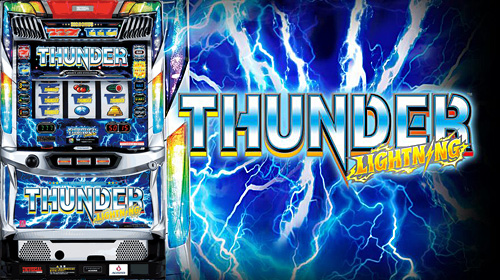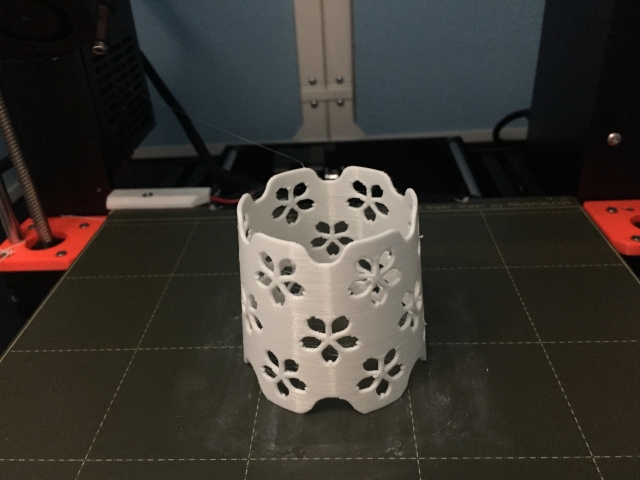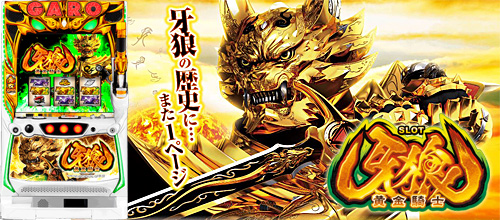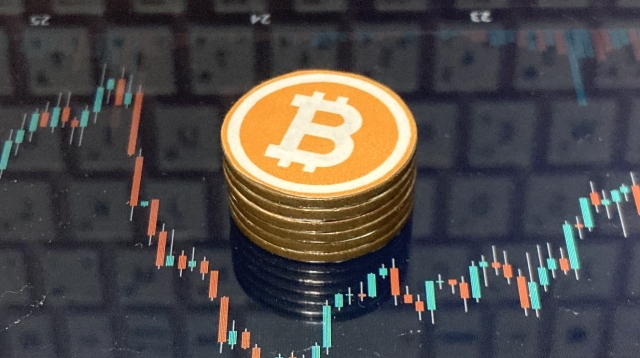ゲームのマネタイズと継続的なゲーム運営を考える
アクシーインフィニティは、そのトークンの価格動向、世界中の人々に仕事を作り出す方法、イーサリアムとビットコインを合わせた収益を上回る驚くべき利益の急増など、さまざまな理由でニュースサイクルのヘッドラインを飾ってきた。(その国庫に8490万USDの資金が!)。
この記事では、これまでのゲームのマネタイズ方法、Play to Earがマネタイズの新しいモデルとしてどのように機能するか、そしてこのマネタイズ形式が開発者とプレイヤーの関係をどのように変えることができるかを調査しています。
その過程で、さまざまなビデオゲーム経済の事例を紹介します。
まず、ビデオゲームのマネタイズを理解するためのフレームワークを確立し、無料プレイ、プレミアムゲーム、アプリ内課金、DLC、プレイ・トゥ・イヤーについて論じる。
最後に、プレイ&アーニングが開発者とプレイヤーの間のインセンティブ調整にどのようにつながるかについて書きます。
次号が発売されたら、今すぐ購読して最新情報をゲットしてください。
商品としてのゲーム
ゲームというのは、サーバー代、エンジニアや開発者の人件費など、継続的にお金を必要とする商品です。ゲーム(特にオンラインゲーム)を永続的にサポートするには、たとえピーク時に2億のユーザーアカウントを持つゲームであっても(特に!)、お金がかかります。(クラブ・ペンギンを参照)
ゲームの)エンジンを稼働させ続けること
ゲーム開発者は、ゲームを収益化し、資金を調達する方法を選択することができます。(1)初期開発資金を確保し、(2)ゲームからの収益が支出を上回る方法を見つけなければなりません。
だから、マネタイズするのです。
私の主張は、ビデオゲームにおけるマネタイズの形態が、エンドユーザーのビデオゲーム体験に劇的な影響を与えるということです。ここでは、開発者がマネタイズに関する選択に基づいて遭遇するさまざまなインセンティブについて説明します。
ゲームには、フリー・トゥ・プレイ(F2P)とプレミアム(P2P、またはペイ・トゥ・プレイ)があります。私たちは、フリー・トゥ・プレイを「自由に始められる」と定義しており、プレイヤーに現金を投資させることなく、ある程度のゲームプレイを提供します。これに対し、P2Pゲームでは、ゲームに有意義に参加するために、先行投資が必要です。近年、F2PとP2Pの境界線は曖昧になってきています1。
フリー・トゥ・プレイ
Free-to-Play(無料プレイ)とは、ゲームを始めるにあたって、現金による先行投資が必要ないことを意味します。
オンボーディングには、アカウントの登録、携帯電話へのアプリのダウンロード、あるいは単にゲームのカタログを掲載したウェブサイト(itch.ioなど)への訪問が必要な場合もあります。
無料ゲームは、スポンサー、広告、そして最も悪名高いアプリ内課金(化粧品やゲームプレイに影響を与えるもの)など、さまざまな方法で収益化されます。
課題: 広告はゲームの流れを止め、ユーザーをイライラさせることがあります。報酬型広告は、この不協和音を解消するのに有効ですが、それでもプレイ時間を奪うことに変わりはありません。多くのゲームでは、化粧品の売上はゲームの開発資金をまかなうには不十分であり、「ペイ・ツー・ウィン」という言葉は、ゲーマーなら誰でも知っています2。
Premium Games
Premium games are games that you pay upfront for.
When you want to play these games, you might go to GameStop to buy The Witcher 3 for 18.99, or you might buy Minecraft from the Microsoft store for 19.99, or download Stardew Valley on your iPhone for 7.99 USD.
You could also buy, and then pay a subscription to continue playing in the game, like World of Warcraft. Yes, the game that has had more than 9 billion USD of revenue as of 2017. You’ll see more WoW in other articles, too!
The Challenge of Monetization
Both F2P and Premium games can have multiple monetization features: a free-to-play game can be free-to-start while allowing membership subscription (Runescape) or be free-to-play while allowing a one-time membership purchase for more content (BattleOn). A F2P game can show you advertisements (any hypercasual game on your phone) and allow you to buy cosmetics (DotA 2, League of Legends).
In-App Purchases
Microtransactions. So many forms.
Denial of access to game - You’ll be in the game, and you receive a popup saying ‘oh, too bad you ran out of energy. Want to give us $1.99 to keep playing?’
Cosmetic - Here’s some items that make you look cooler than other people. And you basically have to pay to get them.
Powerups - Here’s some items that make you stronger than other people, faster.
It goes on, and on.
I do believe if we zoom out from this frame of “how can we make the most money from the player”, we’ll be able to discover new modes of monetization that (1) grow game communities and (2) derisk the game development process. I believe relying solely on monetization via IAP / microtransactions is a local maxima which erodes trust of players over time.
Even cosmetics aren’t immune from the animosity towards microtransactions. NPR wrote this piece back in March, with a great insight:
Microtransactions aren't just about the cosmetic upgrades; often, they're important to the actual gameplay. Dr. Ellen Evers, a marketing professor at the University of California, Berkeley who researches microtransactions, says that can take away a video game's magic.
…
“The implicit assumption is that by playing the game and building up your character, you're supposed to get better," says Evers. "Microtransactions basically make the game easier. They violate those rules and norms that are part of the game."
The magic circle of the game is violated when you press too heavily upon that assumption, which can disengage players. Microtransactions aren’t terrible, but game developers have to be very careful about using them.
プレミアムゲーム
プレミアム・ゲームとは、前金を払って購入するゲームのことです。
これらのゲームをプレイしたい場合、GameStopで『ウィッチャー3』を18.99ドルで購入したり、Microsoftストアで『Minecraft』を19.99ドルで購入したり、iPhoneで『Stardew Valley』を7.99ドルでダウンロードしたりするかもしれません。
また、World of Warcraftのように、購入した後、そのゲームで遊び続けるためにサブスクリプションを支払うこともできます。そう、2017年時点で90億USD以上の収益を上げているゲームです。他の記事でもWoWを紹介していますよ。
マネタイズへの挑戦
F2Pゲームもプレミアムゲームも、複数のマネタイズ機能を持つことができます。フリー・トゥ・プレイのゲームでは、会員登録を認めながら無料で始めることができたり(Runescape)、フリー・トゥ・プレイでありながら1回限りの会員購入でさらなるコンテンツを購入できたり(BattleOn)することが可能です。F2Pゲームは、広告を表示したり(携帯電話のハイパーカジュアルゲーム)、化粧品を購入することができます(DotA 2、League of Legends)。
アプリ内課金
マイクロトランザクション。様々な形態がある。
ゲームへのアクセス拒否 - ゲーム中に「ああ、残念、エネルギーが切れました」というポップアップが表示されることがあります。プレイを続けるために1.99ドル出しますか』。
コスメティック - あなたを他の人よりもカッコよく見せるアイテムがここにあります。そして、基本的にお金を払って手に入れる必要があります。
パワーアップ - 他の人よりも強く、速くなるアイテムです。
などなど。
この「プレイヤーからいかに多くのお金を巻き上げるか」というフレームから飛び出せば、(1)ゲームコミュニティを成長させ、(2)ゲーム開発プロセスのリスクを軽減する、新しいマネタイズの方法を発見することができると信じています。IAPやマイクロトランザクションによるマネタイズにのみ依存することは、時間とともにプレイヤーの信頼を損なうローカル・マキシマムであると思います。
化粧品でさえ、マイクロトランザクションに対する反感を免れることはできません。NPRは3月にこの記事を書きましたが、素晴らしい洞察でした。
マイクロトランザクションは化粧品のアップグレードだけでなく、実際のゲームプレイにとって重要であることが多いのです。カリフォルニア大学バークレー校のマーケティング教授でマイクロトランザクションを研究しているエレン・エヴァース博士は、それがビデオゲームの魅力を奪ってしまう可能性があると言います。
...
「ゲームをプレイし、キャラクターを成長させることで、より良くなるはずだという暗黙の前提がある」とEvers氏は言う。「マイクロトランザクションは、基本的にゲームを簡単にするものです。彼らはゲームの一部であるそれらのルールや規範を侵害します。"
その前提を重く押し付けるとゲームの魔法陣が侵され、プレイヤーのやる気を失わせることになるのです。マイクロトランザクションは恐ろしいものではありませんが、ゲーム開発者はその使用について非常に注意しなければなりません。
Combating Dissonance
With these existing models, developers have to walk a tenuous line. Why?
As they develop the game, any feature has to serve bottom-line revenue somehow. That’s just how the economics of game development work right now. Let’s raise LTV, reduce CAC. Find ways to cash in on our time, and resources spent developing the game. It can seem like fun and sustainability move in two opposing directions.
Monetization often becomes something that a player dreads (advertisements), or merely tolerates (ok, I can play Clash Royale, and come up against difficult enemies once in a while. But as long as I get to play).
In the same way, when players play the game, they can feel like it draws away from their financial goals. (The closest we can get to integration and alignment is: “I play to destress from my job and work.”)
But moving past that is going to allow for a re-valuation of values: it is an opportunity for designers to pave the way for game economies that allow skilled users to engage in high leverage work, and regular users to enjoy the game, with the accrual of value as a by-product. Work that can fund “nappies and milk for their babies, to shoes and shirts to wear to job interviews.”
Play to Earn / Play and Earn games can help resolve that dissonance and tension. Building Play to Earn experiences means giving people work in the metaverse, and so playing can become more of an investment and less of an expense. Cool, huh?
On Gold Making, and Leveraged Work
In World of Warcraft, there are many ways a player can make gold. In fact, there are entire websites dedicated to how you can make more gold! Killing monsters one by one is one of the slowest ways to do it.
Let’s talk about some ways people make gold in World of Warcraft.
Farming specific items (Bind on Equip Items or Pets that sell well)
AoE mob farming (killing groups of monsters at once)
Mastering the Auction House (buying and selling items to other players, engaging in commerce)
Selling runs (pay me 50k and I’ll bring you in a group to kill this boss for you)
My favorite was the last one. I have fond memories of Wrath of the Lich King, where I would run 25-man raids of skilled players I met on my server (Dath’Remar, Alliance). Towards the end of the expansion, we were near-fully geared, and had multiple alternate accounts (alts) to raid with. So we ran GDKP runs.
We’d take 15 geared players, and 10 undergeared ones. Undergeared players would have to commit say, 20,000 gold each. Whenever equipment dropped from a boss, we’d auction off each item for gold, which is added to the pot. At the end of the raid, the entire pot would be distributed amongst all players.
Self-organizing and networks of legitimacy worked in games like World of Warcraft, so I believe they can work in the metaverse too. In fact, it might work even better: one could write a smart contract that automates such a process, so you wouldn’t even have to trust a raid leader to distribute that gold.
And then you can multithread this process, as Matthew does in For the Win, with eight simultaneous games of Svartalfaheim Warriors (the fictional MMO).
If anything, it’ll teach a whole generation of people how to write bots to play those games, and that might not be too terrible of an outcome too :)
Play to Earn
Play to Earn games have complex digital economies, just like World of Warcraft. There are many different ways to make and spend in-game currency. Players work to earn “incredible loot”, and develop value. The question is: can that value pay their bills?
In a future article, we can dive deeper into the Axie Infinity phenomenon and how their virtual economy works to provide a compelling play-to-earn experience.
But I believe you can get a good understanding of the potential impact of developing more play-to-earn experiences from watching this 18 minute documentary.
Some salient quotes:
“At first, it looks easy because there’s a cute Axie… but when you’re in the game it’s like playing chess. It’s strategic.”
“(Playing Axie Infinity) is his hobby. Even when he loses, he would still play even without getting anything.” - Lola Vergie, 65, speaking about her partner, Lolo Silverio, 75
“(The pandemic) destroyed a lot of physical jobs, and in many cases, permanently… we’re dealing with a fundamental change in the nature of work.” - Gabby Dizon, Co-founder, Yield Guild Games (YGG)
YGG just raised 12.5 million USD in a public token sale.
“(With Play to Earn), people get an opportunity to play, which is what they like to do, and they have the opportunity to make money from spending their skill and time in games to make a living.” - Anil Lulla, Chief Operating Officer at Delphi Digital, a New York based blockchain consulting firm
“Crypto based games are community owned. Everybody in the community gets to share in the revenues and the upsides which means that participants, people who play, get a chance to play to earn.” - Mark Cuban
Building a game with Play to Earn in mind means bringing in the larger community and allowing them to benefit from the game’s growth. It is incentive alignment.
Developers have to lower the walled garden around digital assets in these game economies. They have to acknowledge grey markets and make them transparent.
Then, they can say, hey, we’d like a cut of those transactions too — for facilitating transactions. It’s a chance to acknowledge the dissonance that players feel when playing games, and tackle it by making it a part of the game.
When developers design games that are ‘play-to-earn’ first, it feels less like a zero-sum game between devs and players. You won’t be grafting on play-to-earn mechanics, you’ll be working together with players to create new value.
不一致を克服する
このような既存のモデルでは、開発者は微妙なラインを歩かなければならない。なぜか?
ゲームを開発する以上、どんな機能であっても、何らかの形で収益の底上げに貢献しなければならないからです。それが、現在のゲーム開発の経済学的な仕組みなのです。LTVを上げよう、CACを下げよう。ゲーム開発に費やした時間やリソースを現金化する方法を見つけよう。楽しさと持続可能性は、相反する方向に進んでいるように見えます。
マネタイズは、しばしばプレーヤーが恐れるもの(広告)、あるいは単に許容するものになります(OK、私はクラッシュ・ロワイヤルをプレイして、たまに難しい敵に遭遇することができます。でも、遊べればいいんだ)。
同じように、プレイヤーがゲームをプレイするとき、それが金銭的な目標から引き離されるように感じることもあります。(統合と整合に最も近いのは "仕事や作業からストレス解消するためにプレイしている")
しかし、それを乗り越えれば、価値の再評価が可能になります。熟練したユーザーはレバレッジの高い仕事に従事し、一般ユーザーは副産物として価値の発生を伴うゲームを楽しむことができる、ゲーム経済への道をデザイナーが切り開く機会なのです。"赤ちゃんのためのおむつやミルク、就職の面接に着ていく靴やシャツ "を賄えるような仕事。
Play to Earn / 遊んで稼ぐゲームは、この不協和音と緊張感を解消するのに役立ちます。Play to Earn体験を構築することは、メタバースにおいて人々に仕事を与えることを意味し、そうすることで、遊ぶことがより投資となり、出費を減らすことができます。クールでしょう?
ゴールド稼ぎとレバレッジの効いた仕事について
World of Warcraftでは、プレイヤーがゴールドを稼ぐ方法はたくさんあります。実際、より多くのゴールドを稼ぐ方法を紹介するウェブサイトも存在します。モンスターを1匹ずつ倒すのは、最も時間のかかる方法の1つです。
それでは、World of Warcraftでゴールドを稼ぐ方法をいくつか紹介しましょう。
特定のアイテムのファーミング(高く売れるBind on Equipアイテムやペット)
AoEモブファーミング(モンスターの集団を一度に殺すこと)
オークションハウスを使いこなす(他のプレイヤーにアイテムを売買し、商売をする)
セリング・ラン(5万円払えば、このボスを殺すためにグループを連れてきてあげるよ)
一番好きだったのは最後のやつです。Wrath of the Lich Kingでは、自分のサーバー(Dath'Remar、Alliance)で知り合った熟練プレイヤーを集めて25人規模のレイドを運営したのがいい思い出です。拡張の終わり頃、我々はほぼフル装備で、レイド用の複数の代替アカウント(アルト)を持っていました。そこで、GDKPを実行しました。
ギアが揃ったプレイヤー15人と、ギアが足りないプレイヤー10人を連れて行きました。装備不足のプレイヤーは、たとえば2万ゴールドずつコミットしなければなりません。ボスから装備が落ちたら、オークションに出品してゴールドを集め、それをポットに追加するんです。レイドが終わったら、ポット全体を全プレイヤーに分配する。
自己組織化と正当性のネットワークは、「World of Warcraft」のようなゲームで機能したので、メタバースでも機能すると信じています。実際、もっとうまくいくかもしれません。このようなプロセスを自動化するスマートコントラクトを書けば、レイドリーダーを信頼しなくても、ゴールドを分配できるようになります。
そして、マシューが『For the Win』で行っているように、Svartalfaheim Warriors(架空のMMO)のゲームを8つ同時に行うことで、このプロセスをマルチスレッド化することができるのです。
どちらかというと、そのようなゲームをプレイするためのボットの書き方を全世代に教えることになり、それもあまりひどい結果ではないかもしれません:)
プレイ・トゥ・アーンの場合
Play to Earnのゲームには、World of Warcraftと同様に、複雑なデジタル経済が存在します。ゲーム内通貨の作り方や使い方には、さまざまな方法があります。プレイヤーは「信じられないような戦利品」を獲得するために働き、価値を高めていきます。問題は、その価値で課金を支払えるかどうかです。
今後の記事では、Axie Infinityの現象と、その仮想経済がどのように機能し、魅力的なプレイ・トゥ・アーンの体験を提供しているかについて、より深く掘り下げることができます。
しかし、この18分間のドキュメンタリーを見ることで、より多くの "Play-to-Earn "体験を開発することの潜在的な影響力を十分に理解することができると信じています。
主な引用をいくつか紹介します。
「最初は、かわいいアクシーがいるので簡単そうに見えますが、実際にゲームに参加すると、チェスのようなものです。戦略的なんです。"
"(アキシーインフィニティをプレイすることは)彼の趣味です。負けても、何も手に入らずともプレイする。" - ローラ・ベルギー(65歳)、パートナーのロロ・シルベリオ(75歳)について語る
"(パンデミックは)多くの肉体労働の仕事を破壊し、多くの場合、永久に...私たちは仕事の性質の根本的な変化に対処しているのです" - ギャビー・ディゾン(Yield Guild Games(YGG)共同創業者
YGGは公開トークンセールで1250万米ドルを調達したばかり。
"(Play to Earnで)人々は自分の好きなことである遊びをする機会を得て、そのスキルと時間をゲームに費やしてお金を稼ぎ、生計を立てることができるのです" - ニューヨークを拠点とするブロックチェーンコンサルティング会社、Delphi Digitalの最高執行責任者、Anil Lulla氏
"暗号ベースのゲームはコミュニティが所有するものです。コミュニティの誰もが収益とアップサイドを共有することができ、それは参加者、プレイする人々が、稼ぐためにプレイする機会を得ることを意味します。" - マーク・キューバン
Play to Earnを念頭に置いてゲームを構築することは、より大きなコミュニティを取り込み、彼らがゲームの成長から利益を得られるようにすることを意味します。これは、インセンティブを調整することです。
開発者は、こうしたゲーム経済におけるデジタル資産にまつわる壁の庭を低くする必要があります。グレーマーケットを認め、それを透明化する必要があります。
そうすれば、「取引を促進するために、我々もその取引から分け前をもらいたい」と言えるようになります。これは、プレイヤーがゲームをプレイするときに感じる不協和音を認め、それをゲームの一部にすることで取り組むチャンスなのです。
開発者が「遊んで稼ぐ」ことを第一に考えてゲームをデザインすれば、開発者とプレイヤーの間のゼロサムゲームのように感じなくなるのです。プレイ・トゥ・アーンのメカニックを接ぎ木するのではなく、プレイヤーと一緒になって新しい価値を創造することになるのです。
Play and Earn
I’ll also take the chance here to discuss Play to Earn vs Play and Earn.
“Play to Earn suggests that one plays in order to earn, which can feel dystopian. Reminding one of click farms or gold farmers.
Play and Earn suggests the collaboration of play and earning. They are two equal actions. Playing a game for enjoyment, and earning money as well, just by the value you create while playing.”
I first picked up on the term “play and earn” from Guild of Guardians, which is a mobile blockchain RPG published by Immutable. They plan to launch in 2022 or 2023.
The challenge of game designers in a play-to-earn, or play-and-earn game is to help shape the player’s perception of the game’s utility to them. Designers charting in this new space must be able to articulate the value a game provides beyond entertainment, not through words, but game mechanics and economy design.
Play and earn can become a challenge in itself, techne to be fashioned. Allowing players to monetize their value can add another dimension and layer to the game, and a degree of motivation.
To become really, really good at something is to be engaging in a continual process of overcoming.
Now, I’m not claiming that Play to Earn (P2E), or Play and Earn (P&E), are going to replace monetization via microtransactions, or other forms of monetization. However, I will claim that the incentive, and even the obligation, to engage in these patterns will be diminished for such video games, because there exists new ways to create values for both the players and the devs. The devs can keep making decisions that make the game more fun.
There are more options!
There now exist ways that can easily allow players and invested community members to benefit from the value they create by playing the game — ways that are non-zero sum.
That’s an exciting start.
Articles down the road might include:
How the blockchain is changing video game funding.
Dipping into The Metaverse (Getting Started with this concept)
A study of Virtual Economies (Diablo II, World of Warcraft, EVE Online)
When do NFTs make sense in games?
Interoperability: the Key to the Metaverse (and good examples!)
Share this with a friend!
I’d love to hear your feedback down below, and please let me know what other resources you’d like to see me discuss.
Tell me:
What points touched upon here would you like to hear more about?
Would you like to hear more about the metaverse?
Would you like to see more case studies? (Axie Infinity, World of Warcraft, Diablo II, Diablo III RMAH, & more)
Or would you prefer to hear more about blockchain and NFTs, and what’s happening now in that space? (Vogus, Sandbox & The Walking Dead, …Cats)
プレイ&アーン
また、この機会に「Play to Earn」と「Play and Earn」について説明します。
「Play to Earnは、稼ぐためにプレイすることを示唆しており、ディストピア的な感じがします。クリックファームやゴールドファーマーを連想させます。
Play and Earnは、遊ぶことと稼ぐことのコラボレーションを提案します。この2つは対等な行為です。ゲームを楽しむためにプレイし、プレイ中に生み出した価値によって、お金を稼ぐことができるのです。
私が最初に「Play and Earn」という言葉を手に取ったのは、Immutable社がパブリッシングするモバイルブロックチェーンRPG「Guild of Guardians」です。2022年か2023年にローンチする予定だそうです。
Play-to-earn、つまりプレイアンドアーンのゲームにおけるゲームデザイナーの課題は、プレイヤーの自分にとってのゲームの有用性に対する認識を形成する手助けをすることです。この新しい空間を描くデザイナーは、ゲームがエンターテインメントを超えて提供する価値を、言葉ではなく、ゲームメカニクスやエコノミーデザインで明確に表現する必要があります。
プレイして稼ぐこと自体が課題であり、技術的な工夫が必要なのです。プレイヤーが自分の価値をマネタイズできるようにすることで、ゲームに新たな次元とレイヤーを追加し、モチベーションの度合いを高めることができます。
本当に上手になるというのは、常に挑戦し続けるということです。
さて、Play to Earn(P2E)やPlay and Earn(P&E)がマイクロトランザクションによるマネタイズや他の形態のマネタイズに取って代わるとは言いません。しかし、プレイヤーと開発者双方に価値を生み出す新しい方法が存在するため、このようなビデオゲームでは、これらのパターンに関与するインセンティブ、さらには義務が減少すると主張します。開発者は、ゲームをより楽しくするための決断をし続けることができます。
選択肢が増えた
プレイヤーやコミュニティのメンバーが、ゲームをプレイすることで生み出した価値から、簡単に利益を得ることができる方法が存在します。
これはエキサイティングなスタートです。
この先の記事には、次のようなものがあるかもしれません。
ブロックチェーンは、どのようにビデオゲームの資金調達を変更するか。
Dipping into The Metaverse (このコンセプトを始める)
バーチャル・エコノミーの研究(Diablo II、World of Warcraft、EVE Online)
ゲームにおいてNFTが意味を持つのはどのような場合か?
相互運用性:メタバースの鍵(良い例もあります!)。
友人と共有しましょう
また、他にどのようなリソースを取り上げてほしいか教えてください。
教えてください。
ここで触れたことの中で、もっと聞きたいことは何ですか?
メタバースについてもっと聞きたいですか?
もっとケーススタディを見てみたいですか?(アクシーインフィニティ、World of Warcraft、Diablo II、Diablo III RMAH、その他)。
あるいは、ブロックチェーンやNFT、その領域で今何が起こっているのかについてもっと聞きたいですか?(Vogus、Sandbox & The Walking Dead、...Cats)
おすすめ記事
【英語学習 暗号通貨、NFT、Web3.0】レベル1:Metaversusの紹介





